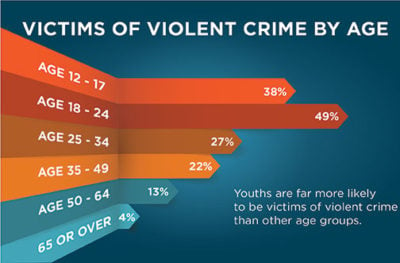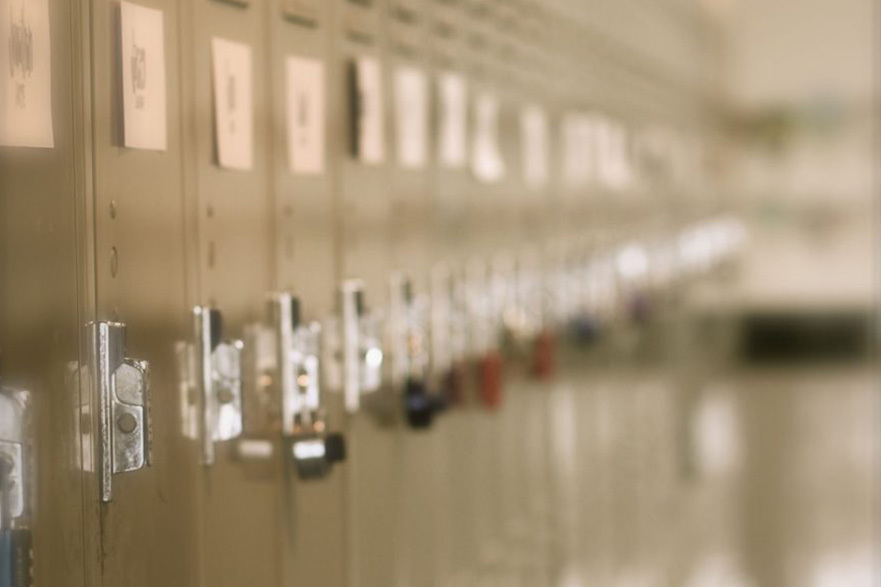There are reasonable things for kids to worry about during the school day: fitting in with their peers, getting to class on time, and passing the dreaded pop quiz. It’s upsetting to think that children today might go to school afraid that they will experience or witness violence.
Kids are exposed to graphic images and eyewitness accounts of school violence on TV and via social media. This creates anxiety that affects their concentration, makes learning more difficult, and can have physical, emotional and behavioral consequences.
The presence of school resource officers, metal detectors, bulletproof barriers and other visible security features—these are all parts of a comprehensive safety plan. But what else could you be doing to keep everyone safe?
Here are three key considerations to focus on as you refine and improve your school safety strategy.
The Trend of Violent Crime and Fear in Schools
While violent crime in schools has decreased over the past two decades, there is still a significant threat, especially for older kids. Teens are still far more likely to be victims of violent crime than any other age group, and students’ fear for their safety at historically high rates.

source: U.S. Department of Education 2015
Recent numbers suggest that those fears are not unfounded:
- 113 people were killed at their schools in 2018—making 2018 a deadlier year for children at school than it was for U.S. soldiers in the battlefield.
- In 2017, teenage students experienced about 520,500 nonfatal violent victimizations at school.
- In that same year, 6% of high school students reported being threatened or injured with a weapon on school property in the 12 months before the survey.
- In 2015-2016, 79% of public schools recorded one or more violent incidents or serious crimes on school property.
It’s interesting to note that while actual violence has decreased, people threatening violence is on the rise. Bomb threats doubled between the 2012-2013 and 2015-2016 school years, and increased another 62% between 2016-2017 and 2017-2018.
Why Do Violent Crimes Happen at Schools?
While we will never completely comprehend why someone would walk into a school and start shooting, we can theorize that variables, both personal and environmental, contributed to their violent behavior. Experts agree that these are some contributing factors to the rise in school violence.
Stress and depression
It’s extremely important to avoid stigmatizing mental health issues, especially among the most vulnerable (like adolescents). But mental illness poses a grave risk of harm (especially self harm) among school-age children. Teens are still developing the coping skills needed to manage their emotions appropriately. Some teens become violent in an attempt to express their frustration, and the anger can be directed toward others at school. Additionally, teens can have adverse reactions to some treatments for more severe mental illness (such as prescription SSRIs). This can increase the likelihood of violence or suicide.
Access to weapons
In some cases, kids have easy access to weapons, such as guns or knives. This, combined with the pressure to show off or to be accepted at school can lead to violence. Almost one-third of all American homes own a gun, and 5 percent of American high schoolers report carrying a gun to school within the past month.
Social media
Researchers at New Mexico State University found that the more social media attention a mass shooting generates, the more likely it is for a similar incident to occur afterwards. According to their study, if at least 10 out of every million tweets mention a school shooting following the attack, the likelihood of another school shooting goes up 50% within the next eight days.
Gaming & Other Media
Study after study has shown that teens are more likely to act violently if they play violent video games or witness violence in other media. Both the American Psychological Association and the American Academy of Pediatrics strongly recommend against students playing violent video games. The APA stated in 2015 that research has demonstrated a link “between violent video game use and both increases in aggressive behavior … and decreases in prosocial behavior, empathy, and moral engagement.”
How to Make Your School Safer
Keeping children safe at school involves a two-pronged strategy: mitigating the immediate risks and addressing the root causes.
There are several initiatives every school should consider to increase campus safety:
1. Conduct a threat assessment
Take an “all-hazards” approach to school safety. As the Department of Homeland Security (DHS) explains: “There are many different threats or hazards. The probability that a specific hazard will impact [you] is hard to determine. That’s why it’s important to consider many different threats and hazards and the likelihood they will occur.” School violence jumps to mind immediately—but extreme weather, disease outbreaks, and other unforeseeable events have enormous potential to disrupt schools and harm students. Plan accordingly.
Don’t rely on your district administration to conduct an assessment. You know your building, students, and community better than anyone else. Convene a trained, multidisciplinary team, including a school mental health professional, administrators, and school resource officer or local law enforcement. Draw on the wider community (like your region’s emergency manager) as needed. We’ve created this free “all-hazards” planning resource guide to get you started.
2. Create a culture of safety
Communicate to students their own responsibilities in maintaining a safe environment. Reiterate school rules and behavior expectations, and acknowledge behaviors that contribute to a safe place. Teach students what to do if they believe there is a threat, and remind them how important it is to report potential problems to school officials. Make it easy for teens to report threats by providing anonymous reporting systems. Some of the highest impact improvements you can make to school safety and security are low cost—even no-cost—projects.
Secure your Building
Research security features such as access control systems, wireless locks, bulletproof barriers, and metal detectors. Securing the entryways to your building can buy time—which is invaluable when waiting for first responders to arrive.
Train your staff
Your faculty and staff must have thorough training in crisis intervention and active shooter scenarios. Consider active shooter training and response protocol training as well.
We know from decades of talking to security professionals in many different industries that having an up-to-date security plan and communicating that plan to students, staff, parents and visitors will help keep everyone safe (and, more importantly, feeling safe).
While you certainly cannot control the outside world, you can be better prepared to deal with it if you understand the facts.
Next Steps:
-
- Sign up for our newsletter to stay up-to-date with the latest industry news
- Follow us on Twitter, Facebook or LinkedIn



